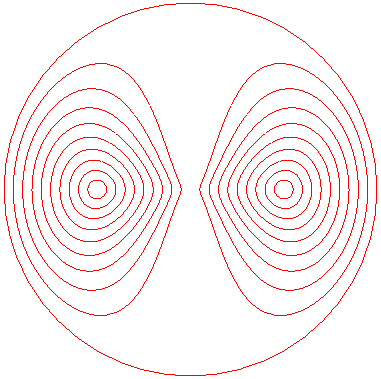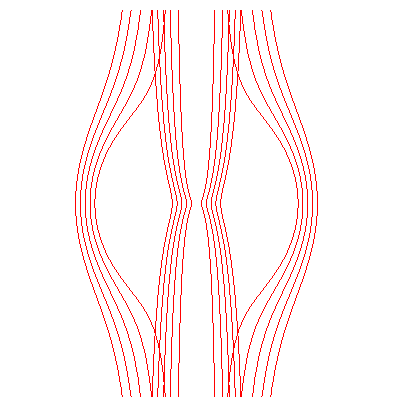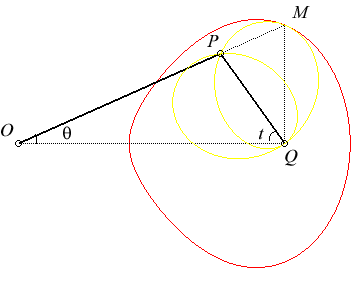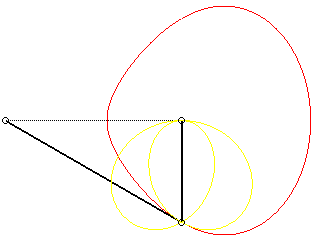BASE OF THE SLIDER-CRANK MECHANISM


| next curve | previous curve | 2D curves | 3D curves | surfaces | fractals | polyhedra |
BASE OF THE SLIDER-CRANK MECHANISM


| Self-invented name. |
 |
Let OP = a be the crank and PQ = b be the
connecting rod:
Polar equation: Cartesian parametrization: 
( Cartesian equation: Sextic of genus 1. |
| Given an articulated mechanism (OPQ), O
being fixed and Q being bound to move on a straight line D
passing through O (here Ox), the curve (G)
that we are studying is the locus of the points of the line (OP)
whose projection on D is Q.
Therefore, it is the base of
the movement of the plane for which P is a fixed point and (PQ)
a fixed line. This movement is called the slider-crank
mechanism, (hence the name of this curve). The rolling curve of the movement
(in yellow on the figure on the right) is Jerabek's
curve.
|
 |
The curve has two bounded components when the crank is
longer than the connecting rod (a > b), and two components
with asymptotes when a < b; when a = b, it is a circle.
| next curve | previous curve | 2D curves | 3D curves | surfaces | fractals | polyhedra |
© Robert FERRÉOL 2017